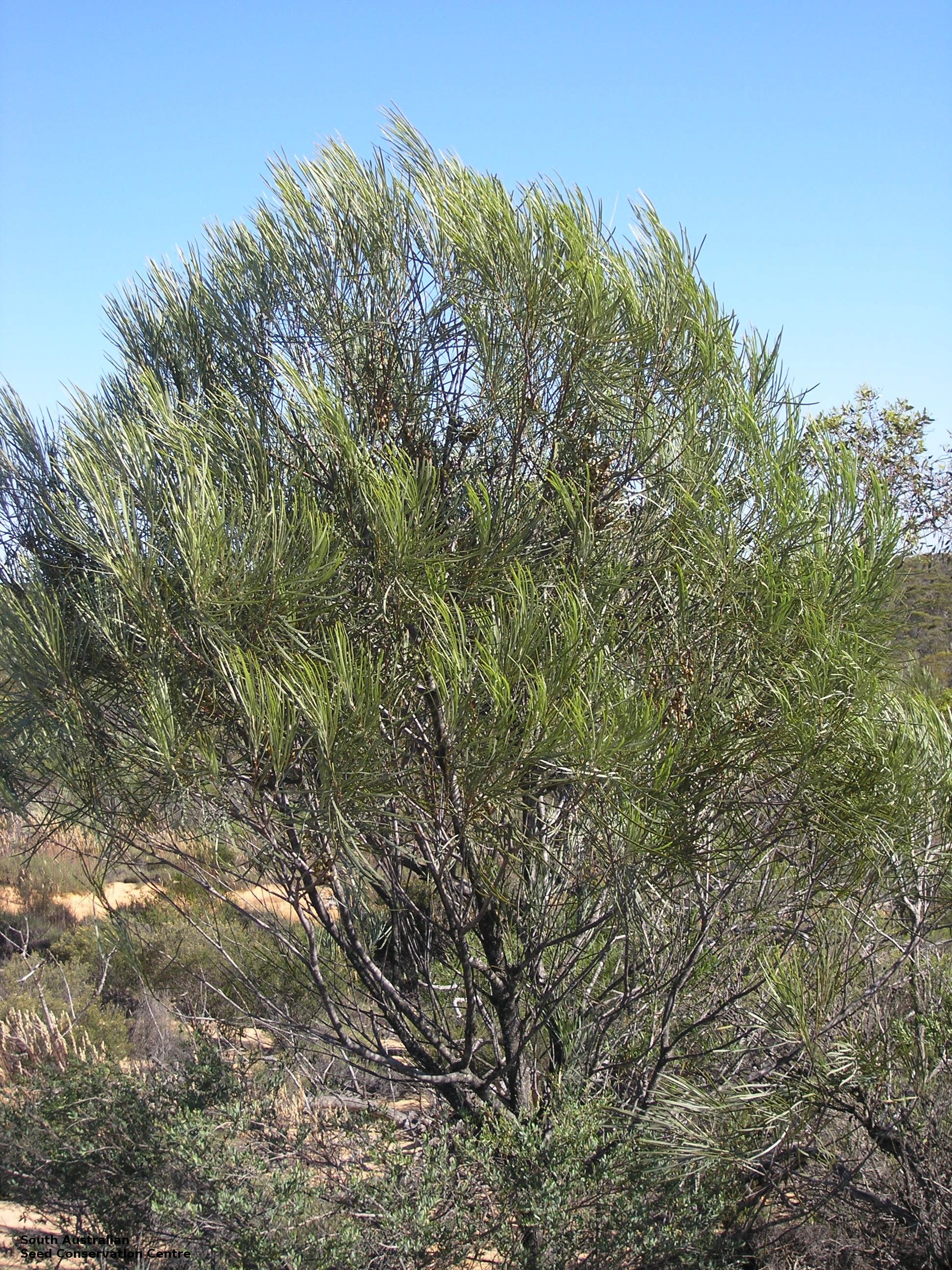
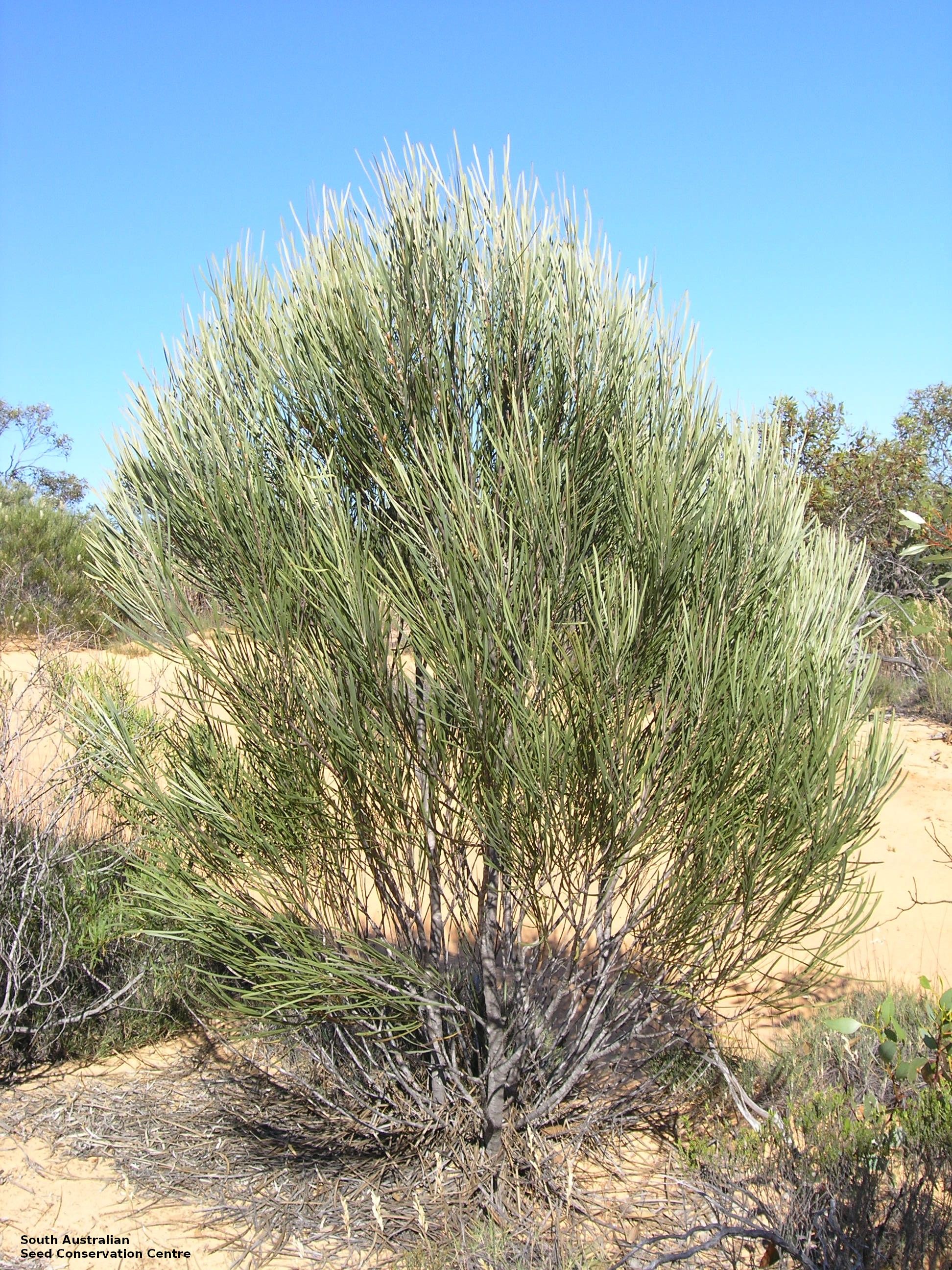
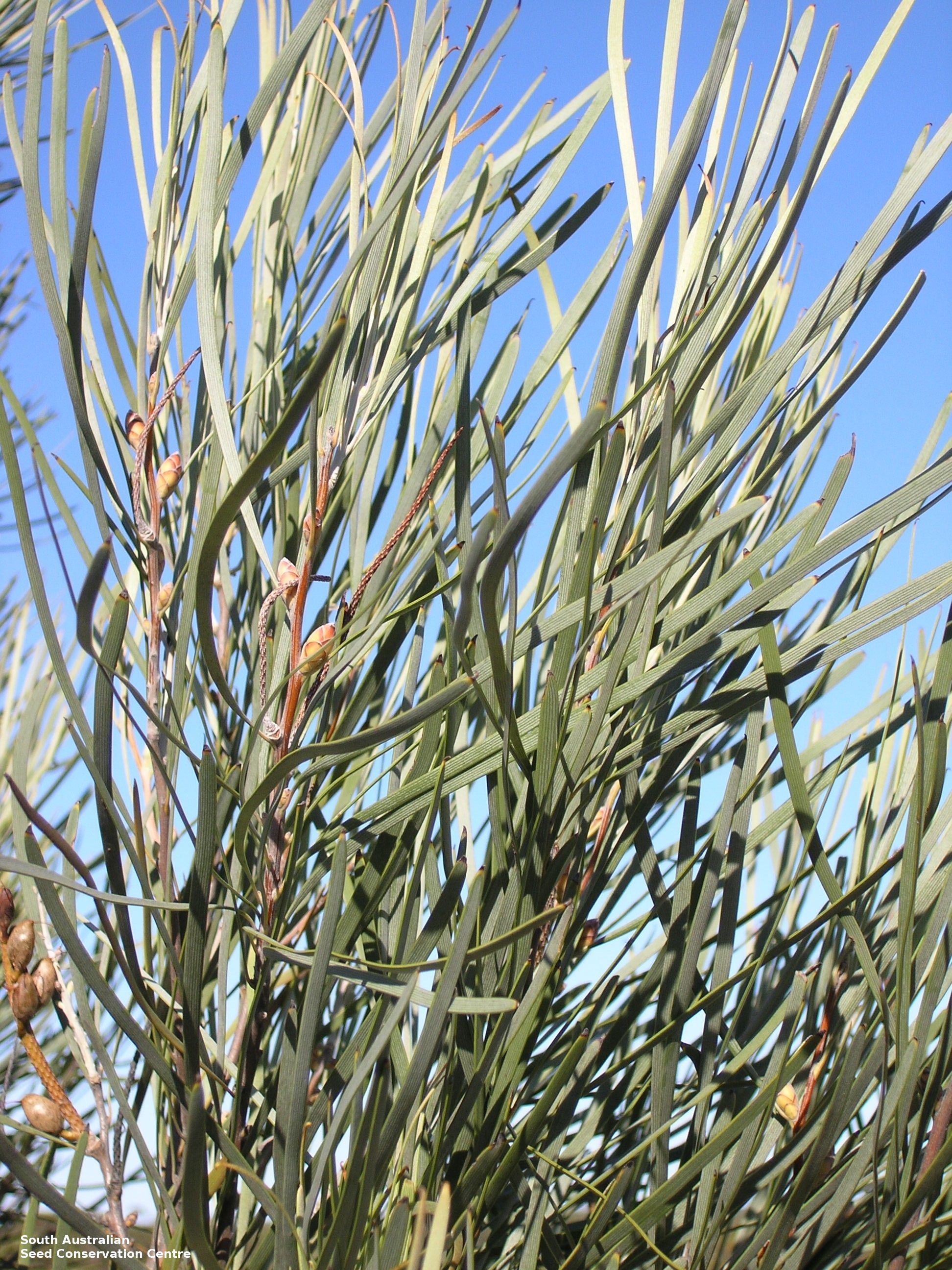
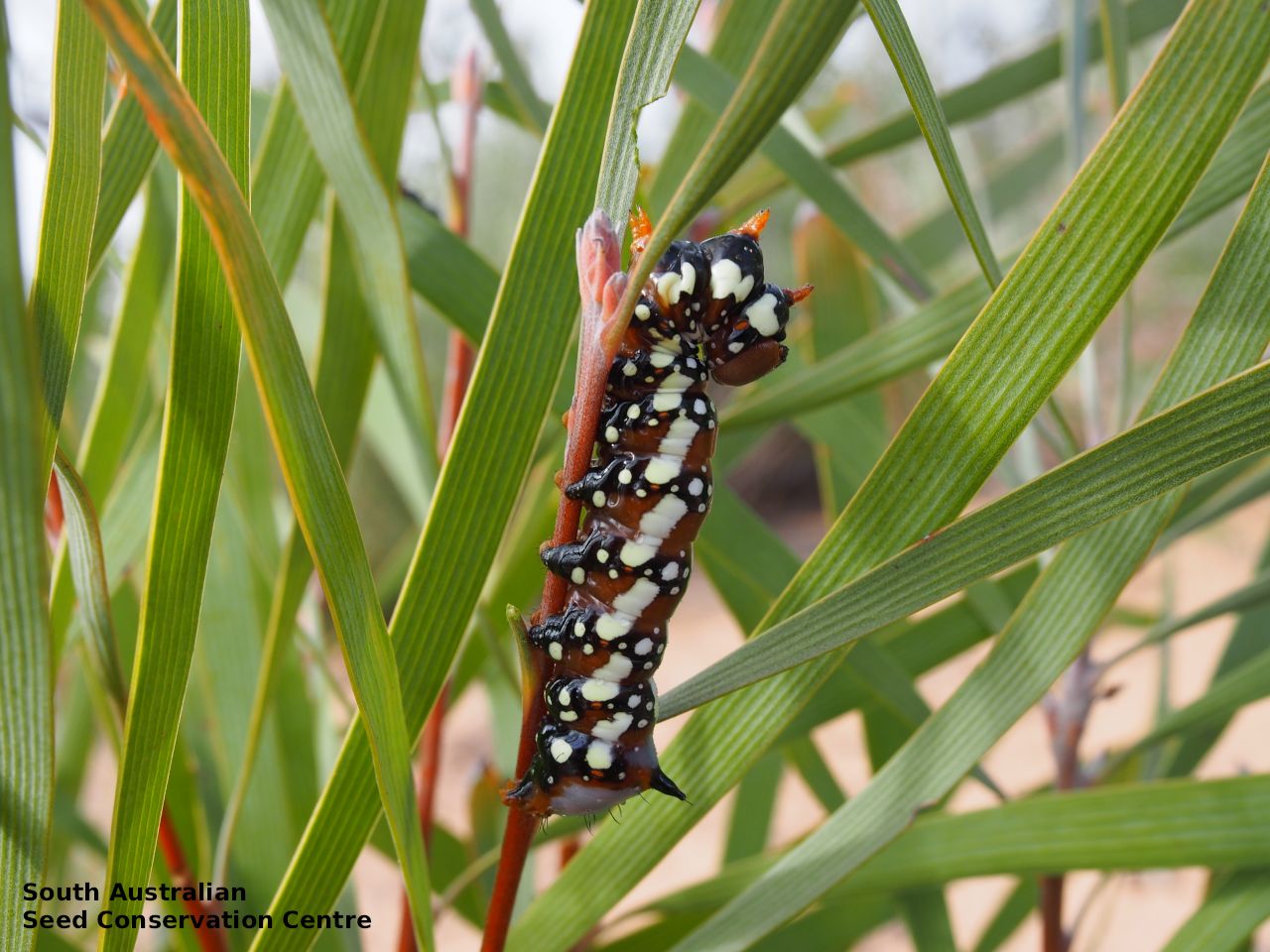
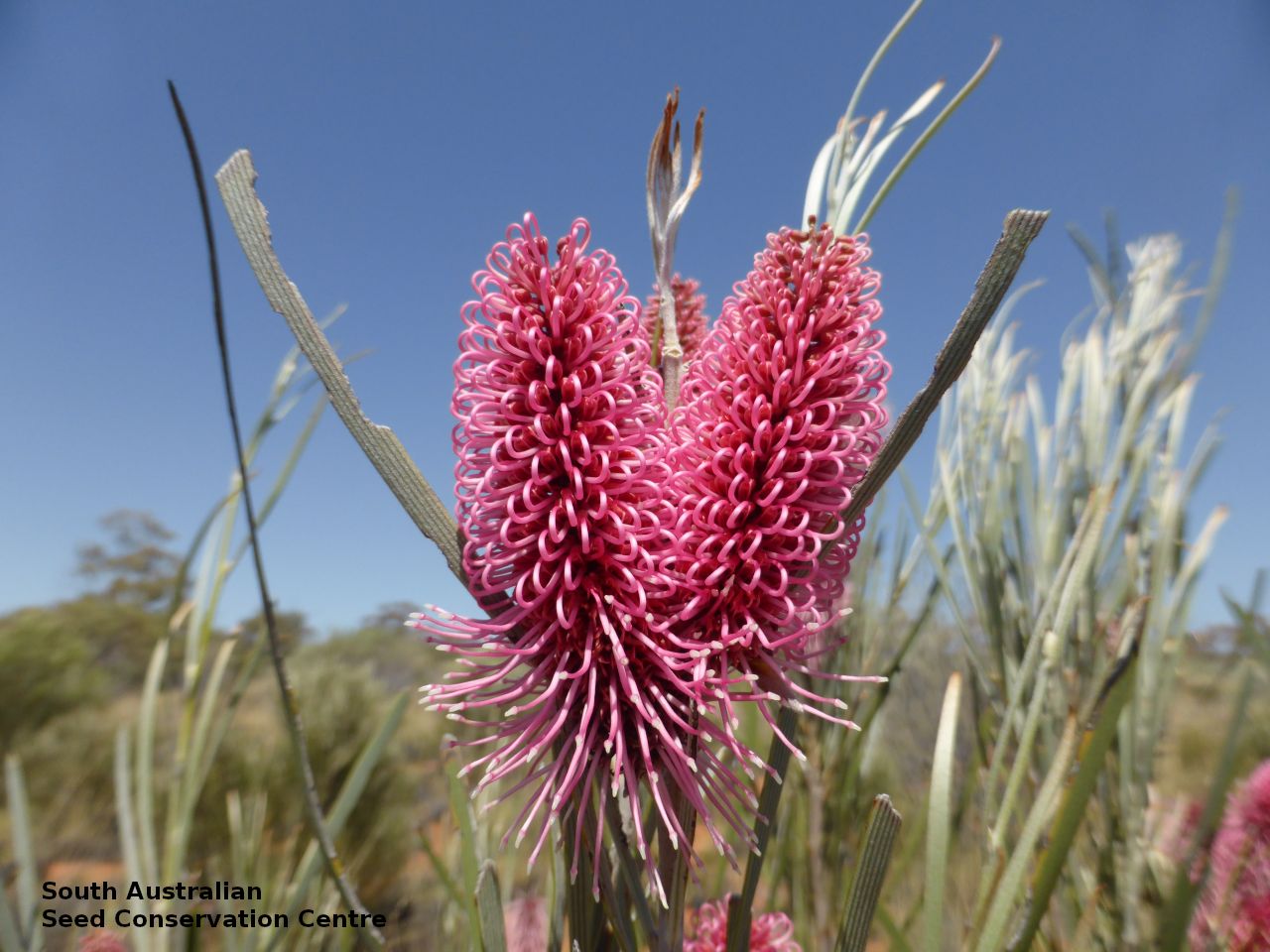
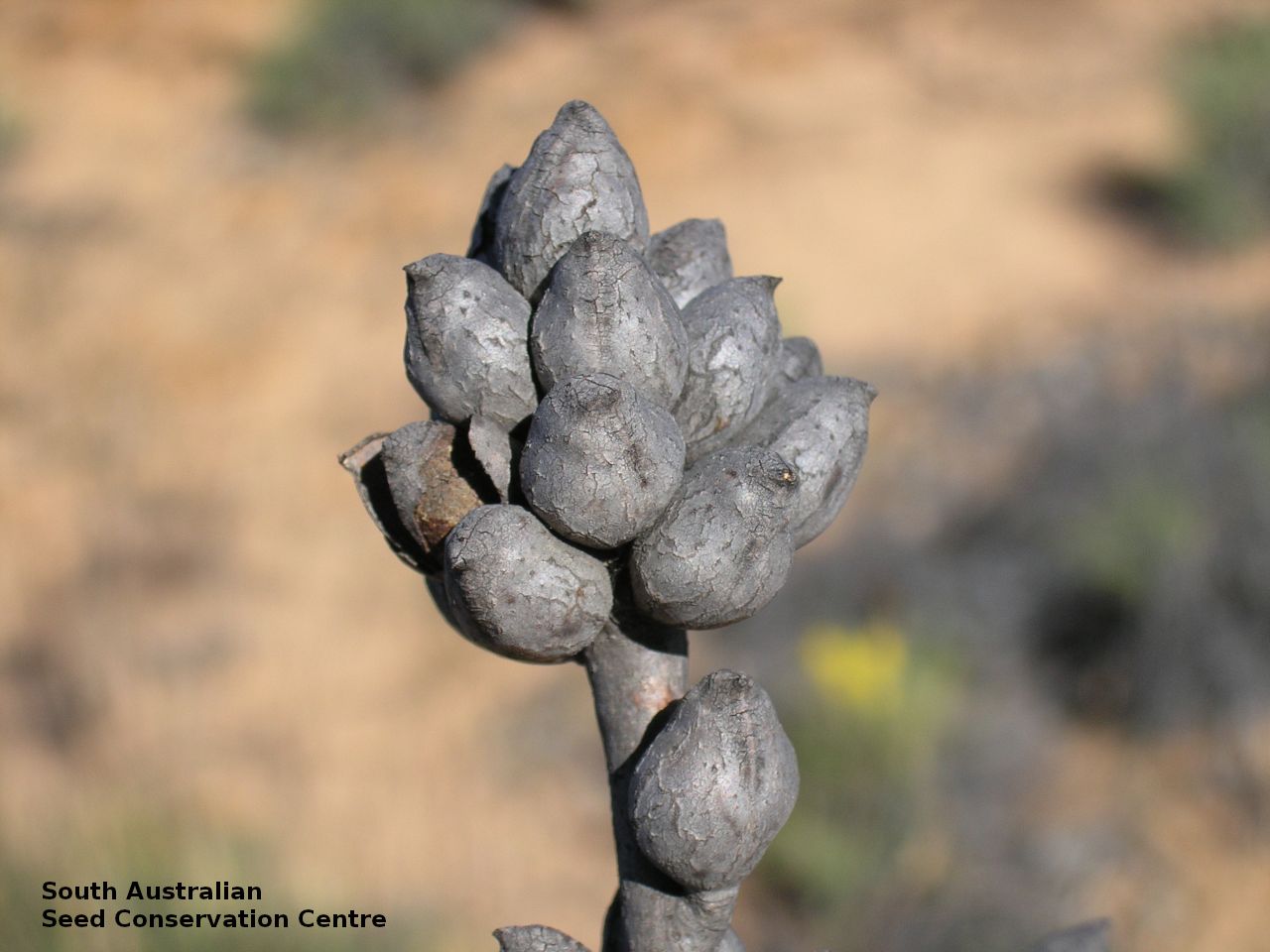
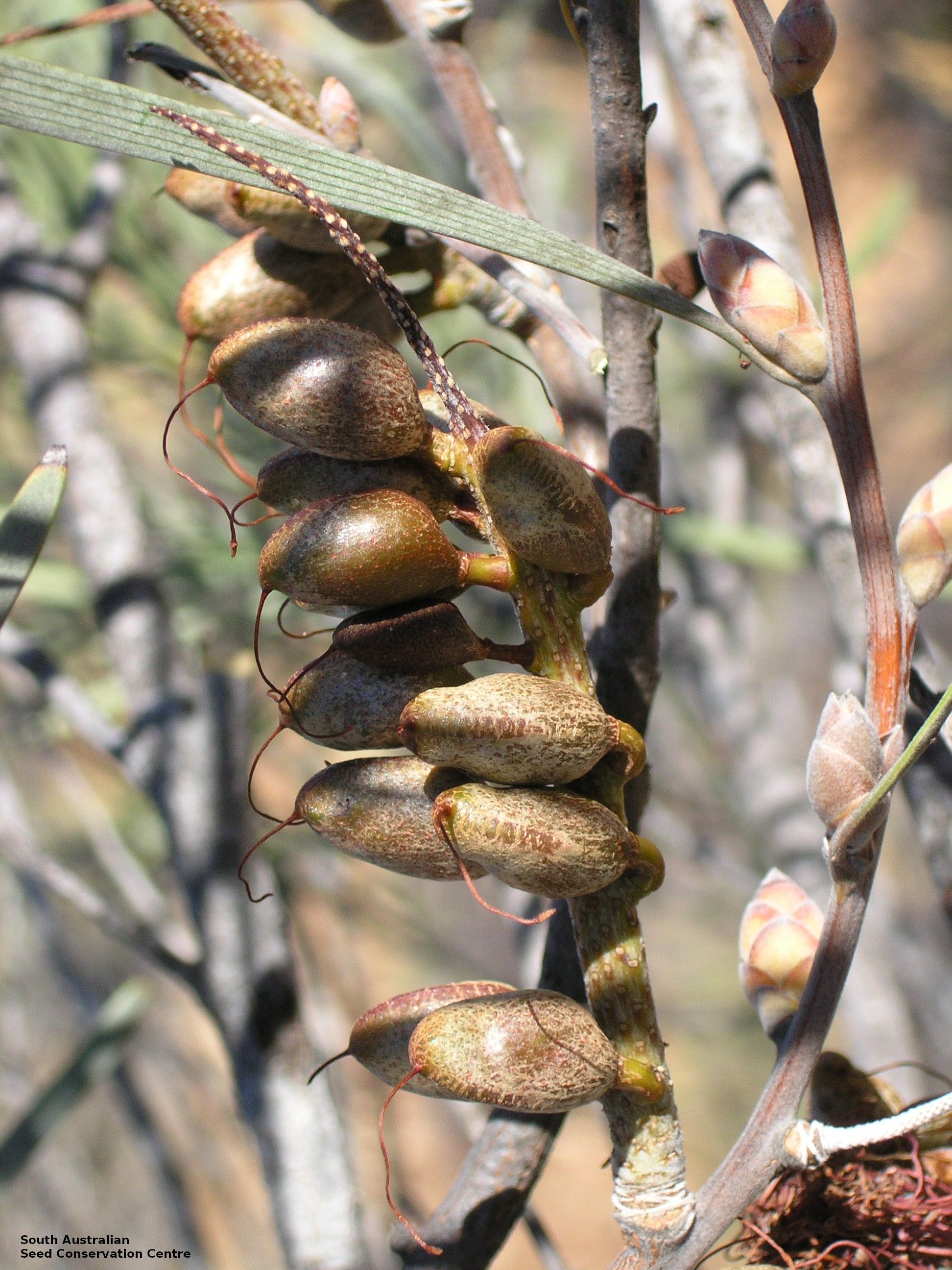
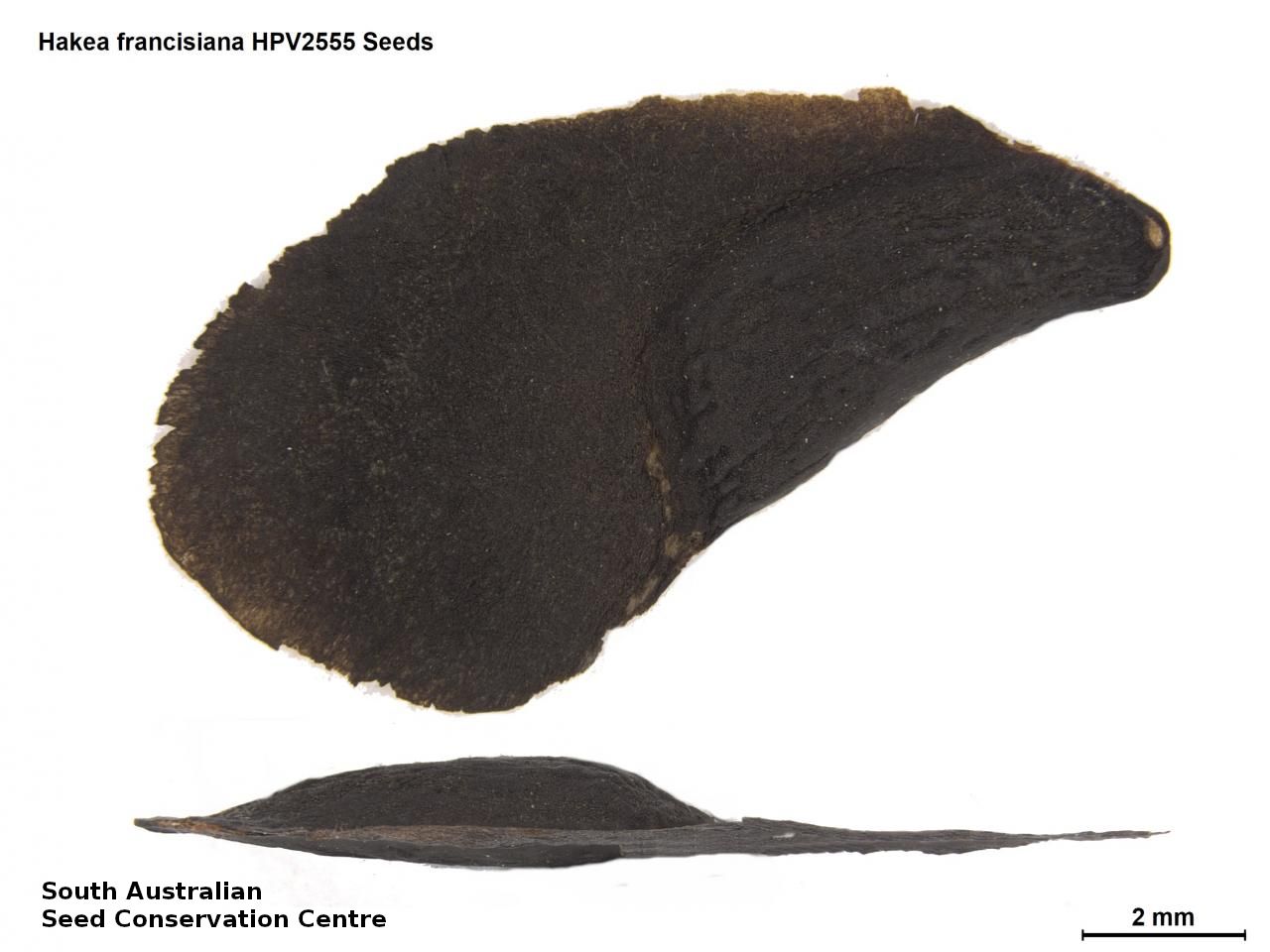

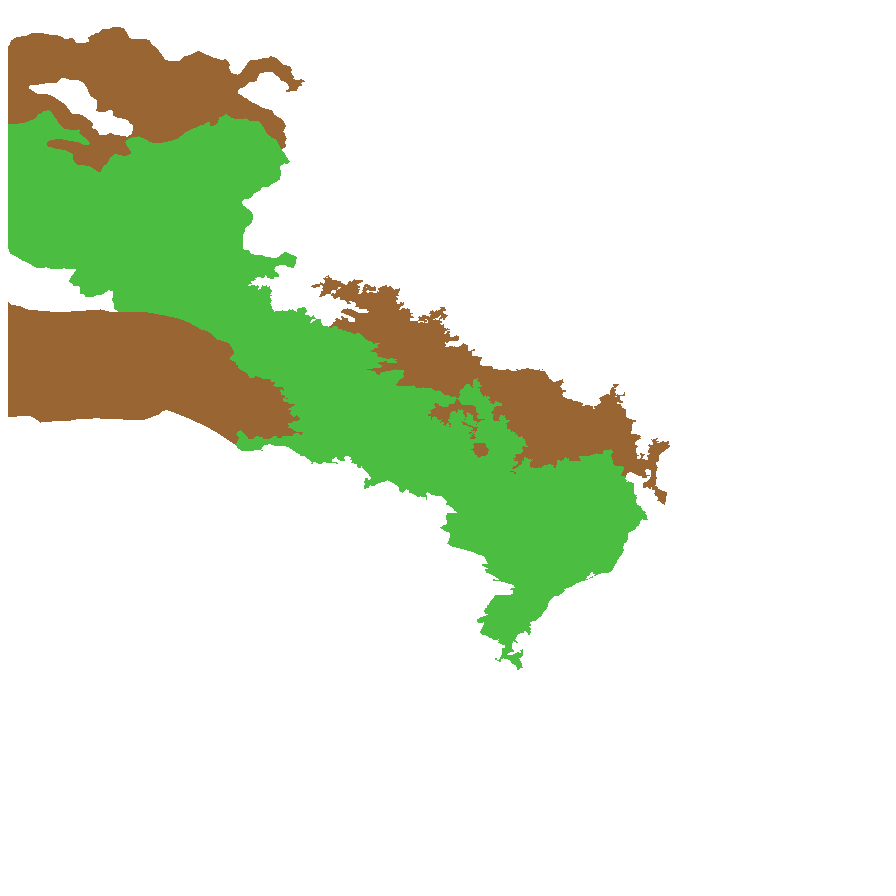
Botanical art
Prior names
Hakea coriacea
Hakea multilineata var. grammatophylla, partly
Hakea multilineata
Common names
Grass-leaf Hakea
Bottlebrush Hakea
Etymology
Hakea named after Baron Christian Ludwig von Hake (1745-1818), a German horticulturalist and patron of botany. Francisiana named after George William Francis (1800-1865), collector of the type specimen and the first director of the Adelaide Botanic Gardens from 1855-1865.
Distribution and status
Found on the northern Eyre Peninsula, Nullarbor and the western parts of South Australia, growing on sandy soil in dunes or on sand plain, in shrubland or woodland. Also found in Western Australia. Native. Common in South Australia. Common in Western Australia.
Herbarium regions: North Western, Nullarbor, Gairdner-Torrens, Eyre Peninsula
NRM regions: Alinytjara Wilurara, Eyre Peninsula, South Australian Arid Lands
AVH map: SA distribution map (external link)
Plant description
Erect shrub or small tree to 8 m tall, with patchily hairs on branchlets. Leaves ascending, flat, linear, to 260 mm long and16 mm wide; finely striate, bluntly mucronate; sparsely pubescent to glabrous. Inflorescence large spike with 150–500 pale to deep pink or red to orange-red flowers. Flowering between July and October. Fruits are greyish-brown woody ovoid fruit to 26 mm long and 14 mm wide, with a short pointed beak. Fruit splits into two to reveal two seeds. Seeds are dark brown to black ovoid seed to 7 mm long and 2 mm wide (13 mm long and 7 mm wide including the wing that extend down one sides of seed). Seed embryo type is investing.
Seed collection and propagation
Collect seeds between January and December. Collect mature woody fruit that are greyish-brown and not split. These will contain seeds. Place the woody fruit in a tray and leave to dry until it splits open. Place the dried fruit in a bucket and shake to dislodge the seeds from the valves. Separate the seeds from the fruit and store the seeds with a desiccant such as dried silica beads or dry rice, in an air tight container in a cool and dry place. From two collections, the seed viability was high, ranging from 90% to 100%. Seeds are non-dormant, viable seed should germinate readily without pre-treatment.
| Location | No. of seeds (weight grams) | Number of plants | Date collected | Collection number Collection location | Date stored | % Viability | Storage temperature |
|---|---|---|---|---|---|---|---|
| BGA MSB | 6,000 (70.8 g) 6,000 (70.8 g) | 60+ | 29-Oct-2004 | MOL4693 Gairdner-Torrens | 28-Mar-2006 | 100% | -18°C |
| BGA | 1,500 (19.21 g) | 40 | 7-Sep-2005 | HPV2555 Eyre Peninsula | 8-Aug-2006 | 90% | -18°C |
Number of plants: This is the number of plants from which the seeds were collected.
Collection location: The Herbarium of South Australia's region name.
% Viability: Percentage of filled healthy seeds determined by a cut test or x-ray.